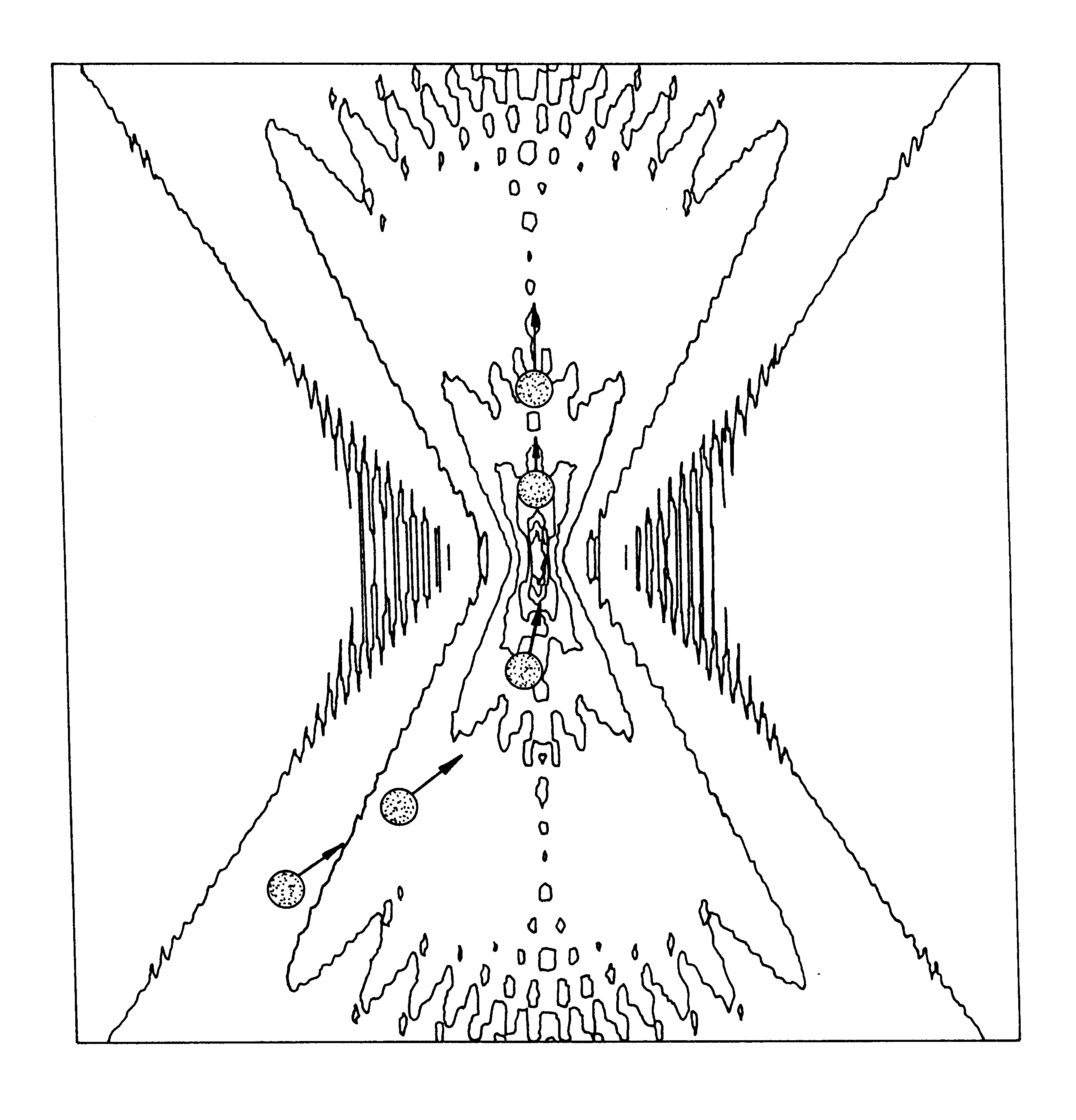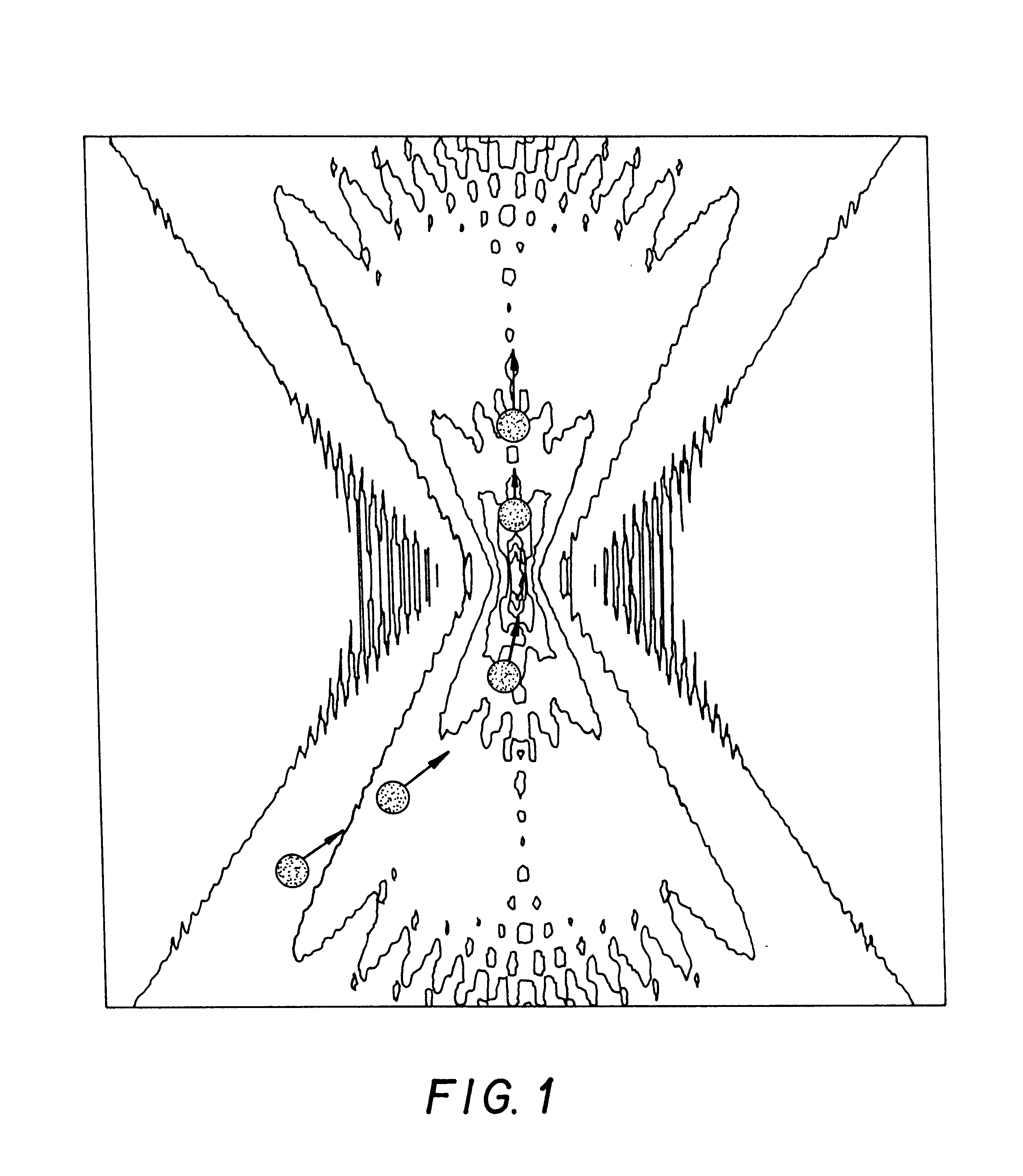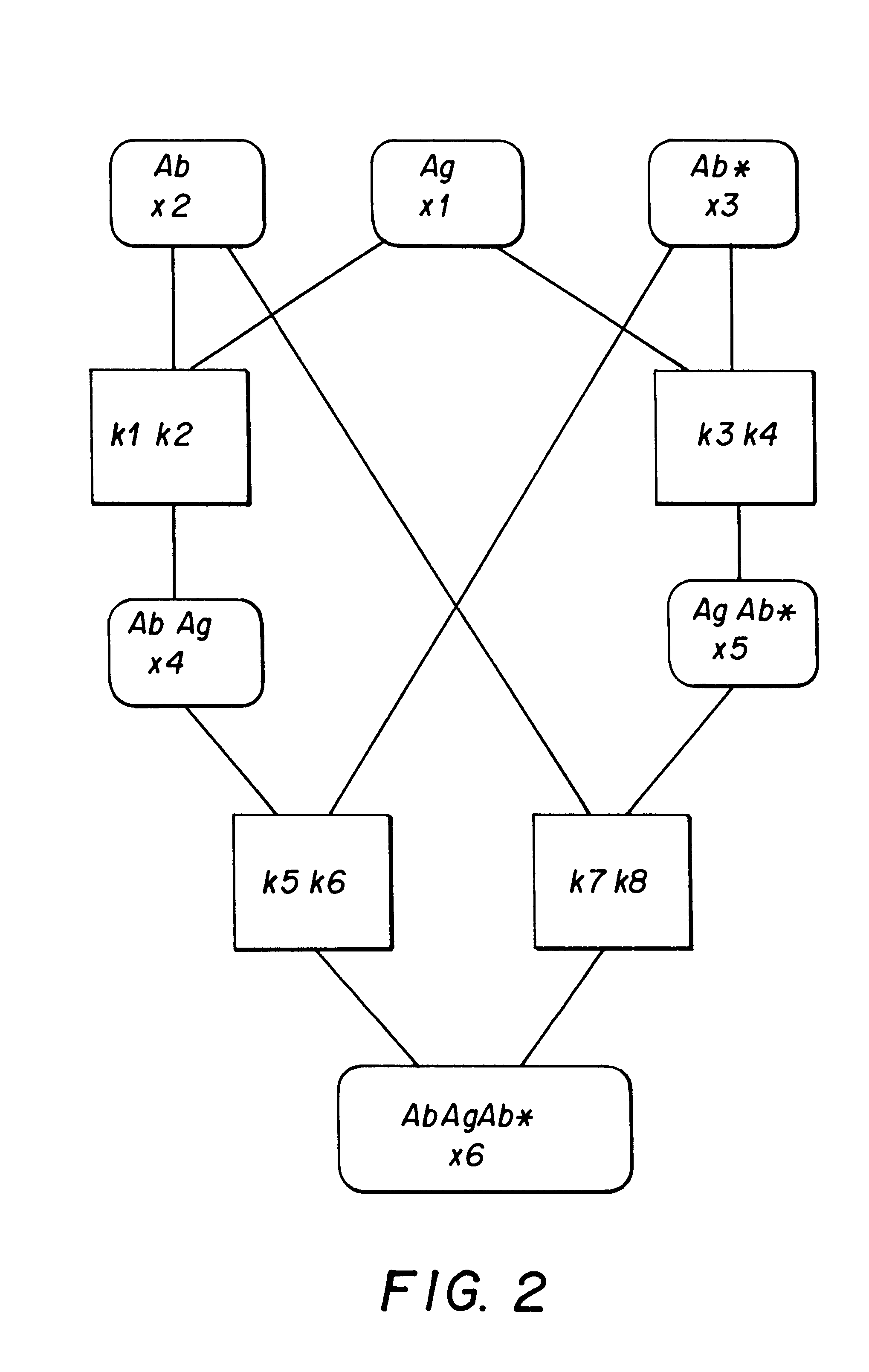Biospecific, two photon excitation, fluorescence detection and device
a fluorescence detection and biospecific technology, applied in the field of biospecific assay methods and devices, can solve problems such as complexity, and achieve the effect of reducing the cost of the system by a large amoun
- Summary
- Abstract
- Description
- Claims
- Application Information
AI Technical Summary
Benefits of technology
Problems solved by technology
Method used
Image
Examples
example
The method described above can be illustrated in more detail using an application example. Reaction charts, reaction equations, standard curves and signal intensity curves presented in FIGS. 2-7 were produced using mathematical modelling.
As a practical example of this invention, we present an assay which uses a biospecific reagent bound to the solid phase. FIG. 2 shows the reaction scheme of the assay. The initial components of the reaction include a biospecific reagent Ab bound to the solid phase, analyte Ag and a labelled reagent Ab*. Components Ab, Ag and Ab* are added simultaneously in the reaction solution. The reaction equations (formulas 1-4) presented in FIG. 3 cover all the possible reactions and products. Letters k refer to the reaction association and dissociation rates. Reaction rates naturally differ a lot. Reactions occurring in the liquid phase are rapid, whereas reactions associated with the solid phase are slower. In this example, the selected reaction constant valu...
PUM
| Property | Measurement | Unit |
|---|---|---|
| wavelength | aaaaa | aaaaa |
| diameter | aaaaa | aaaaa |
| transit time | aaaaa | aaaaa |
Abstract
Description
Claims
Application Information
 Login to View More
Login to View More - R&D
- Intellectual Property
- Life Sciences
- Materials
- Tech Scout
- Unparalleled Data Quality
- Higher Quality Content
- 60% Fewer Hallucinations
Browse by: Latest US Patents, China's latest patents, Technical Efficacy Thesaurus, Application Domain, Technology Topic, Popular Technical Reports.
© 2025 PatSnap. All rights reserved.Legal|Privacy policy|Modern Slavery Act Transparency Statement|Sitemap|About US| Contact US: help@patsnap.com



